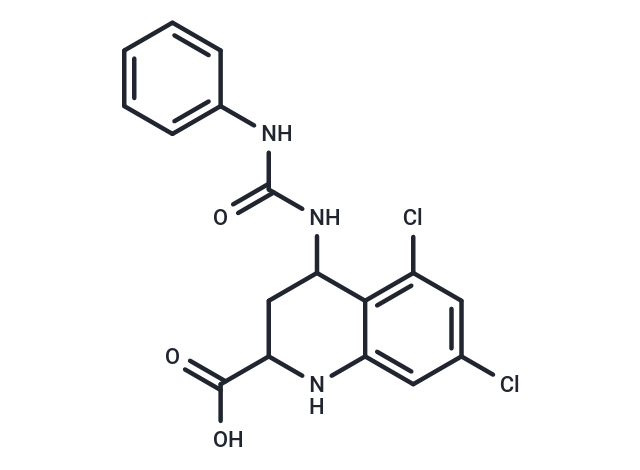Shopping Cart
Remove All Your shopping cart is currently empty
Your shopping cart is currently empty
L-689560 is widely used as a radiolabeled ligand in binding studies and used to study the roles of NMDA receptors in normal neurological processes as well as in diseases. At the GluN1 glycine binding site, L-689560 is an effective N-methyl-D-aspartate (NMDA) receptor antagonist.

| Pack Size | Price | USA Warehouse | Global Warehouse | Quantity |
|---|---|---|---|---|
| 10 mg | $968 | 35 days | 35 days | |
| 50 mg | $3,960 | 35 days | 35 days |
| Description | L-689560 is widely used as a radiolabeled ligand in binding studies and used to study the roles of NMDA receptors in normal neurological processes as well as in diseases. At the GluN1 glycine binding site, L-689560 is an effective N-methyl-D-aspartate (NMDA) receptor antagonist. |
| In vitro | L-689560 is an antagonist of 2-carboxytetrahydroquinoline [2]. |
| In vivo | L-689560 blocks the glycine-induced increase of Akt phosphorylation in the MCAO model. L-689560 (1?mg/kg, ip) obviously decreases the neuroprotective effect of glycine after glycine receptors, and the channel activity of NMDA receptors (NMDARs) are suppressed [1]. |
| Molecular Weight | 380.23 |
| Formula | C17H15Cl2N3O3 |
| Cas No. | 139051-78-8 |
| Relative Density. | 1.51 g/cm3 (Predicted) |
| Storage | Powder: -20°C for 3 years | In solvent: -80°C for 1 year | Shipping with blue ice/Shipping at ambient temperature. |
| Size | Quantity | Unit Price | Amount | Operation |
|---|

Copyright © 2015-2025 TargetMol Chemicals Inc. All Rights Reserved.